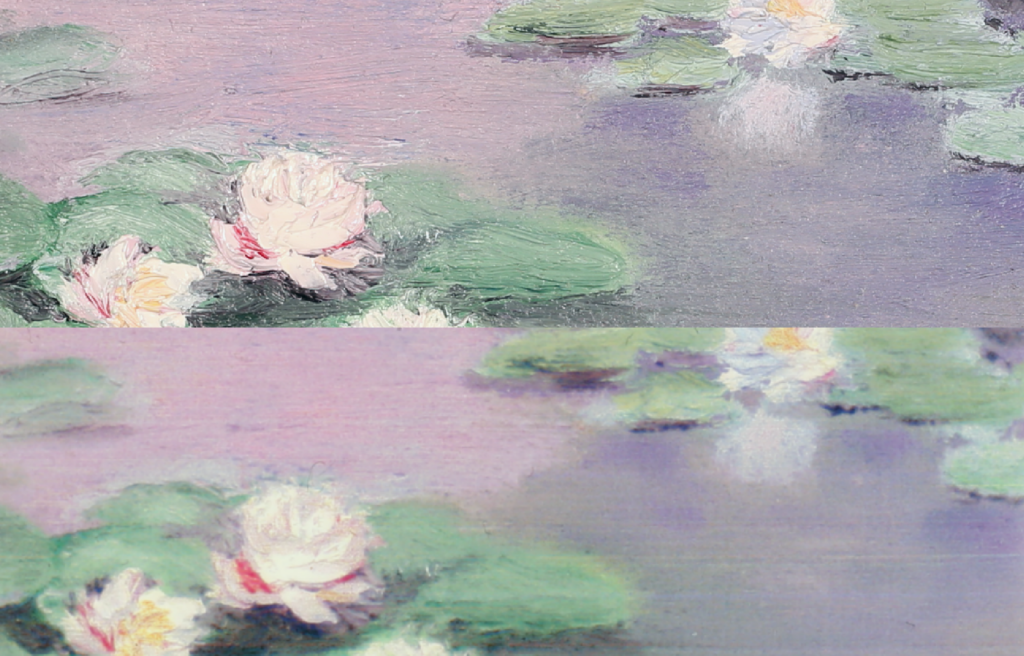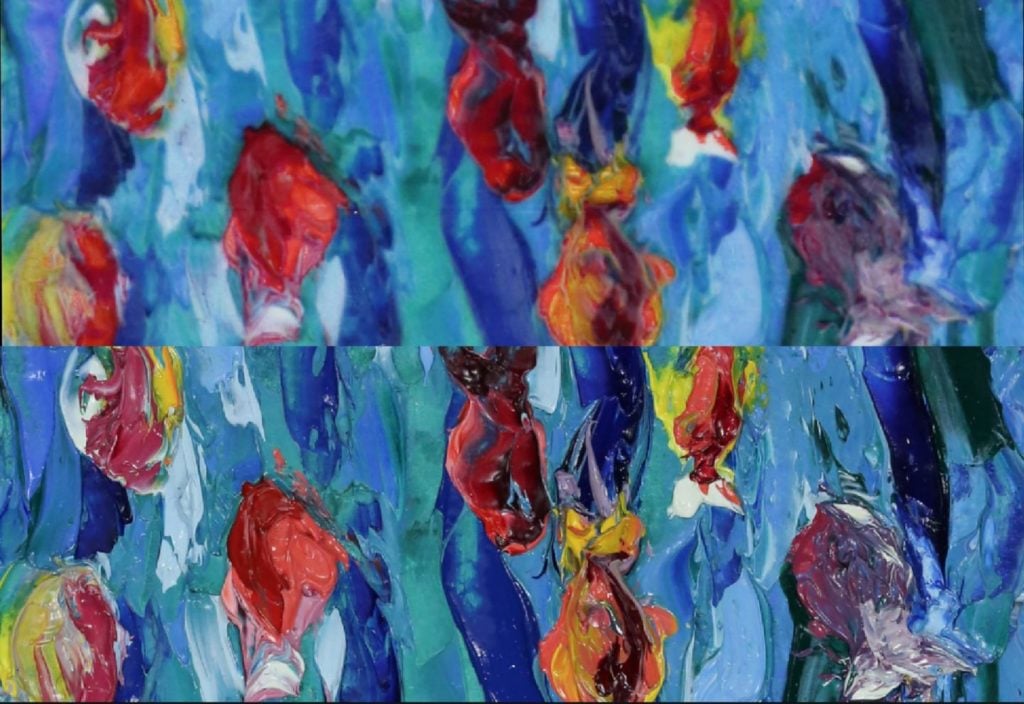Art World
MIT Researchers Are Using Artificial Intelligence to Make Some of the Most Convincing Reproductions of Art Ever
New 3-D printing technology can accurately reproduce works of art with 10 layers of ink.

New 3-D printing technology can accurately reproduce works of art with 10 layers of ink.

Sarah Cascone

Could artificial intelligence help recreate lost masterpieces, such as the paintings stolen from Boston’s Isabella Stewart Gardner Museum? That’s the idea behind RePaint, a new AI-based 3-D printing technology developed by Massachusetts Institute Technology’s Computer Science and Artificial Intelligence Laboratory.
Traditional printing methods use just four colors: cyan, magenta, yellow, and black (also known as CMYK). To achieve a wider spectrum of colors, RePaint chooses from 10 different colored transparent inks, stacking them in thin layers in a 3-D printer. The ink is applied via half-toning, a method that uses tiny ink dots instead of a continuous field of color. The new method, called “color-contoning,” is used in conjunction with a deep learning algorithm that determines what combination of ink shades would produce the best result.
The researchers teamed up with artist Azadeh Asadi, seeking to recreate the oil paintings she made especially for the project. Although each copy was just the size of a business card, the study judged the color fidelity achieved by RePaint to be more than four times as accurate than existing state-of-the-art reproduction technology. There is still room to improve—they still can’t get a perfect cobalt blue, for example, or accurately reproduce surface texture and reflection—but it’s an impressive start.
“If you just reproduce the color of a painting as it looks in the gallery, it might look different in your home,” said the study’s co-author Changil Kim in a statement. “Our system works under any lighting condition and shows a far greater color reproduction capability than almost any other previous work.”

The RePaint technology reproduced an oil painting with unprecedented accuracy of color. Photo courtesy of MIT CSAIL.
The RePaint technology is currently quite expensive and time consuming, but the potential is vast, and the team expects that larger commercial 3-D printers will allow for the reproduction of much larger works.
Possible uses for the new technology include creating copies of famous works of art for home collectors, making postcards and prints of historical pieces, or even making facsimiles that could hang on museum walls to help better preserve fragile originals.

Reproduced paintings using different methods: CMYK inks (top row), the original painting (middle row), and the printed reproductions with 10 inks (bottom row). Paintings ©Azadeh Asadi. Image courtesy of MIT CSAIL.
While it might seem a shame to lock away authentic works in lieu of showing the public a copy—however convincing it might be—the MIT team sees their new technology as making the best of a bad situation.
“The value of fine art has rapidly increased in recent years, so there’s an increased tendency for it to be locked up in warehouses away from the public eye,” said project mechanical engineer Mike Foshey in a statement. “We’re building the technology to reverse this trend, and to create inexpensive and accurate reproductions that can be enjoyed by all.”
Watch a video demonstrating the theory behind the MIT CSAIL project below.